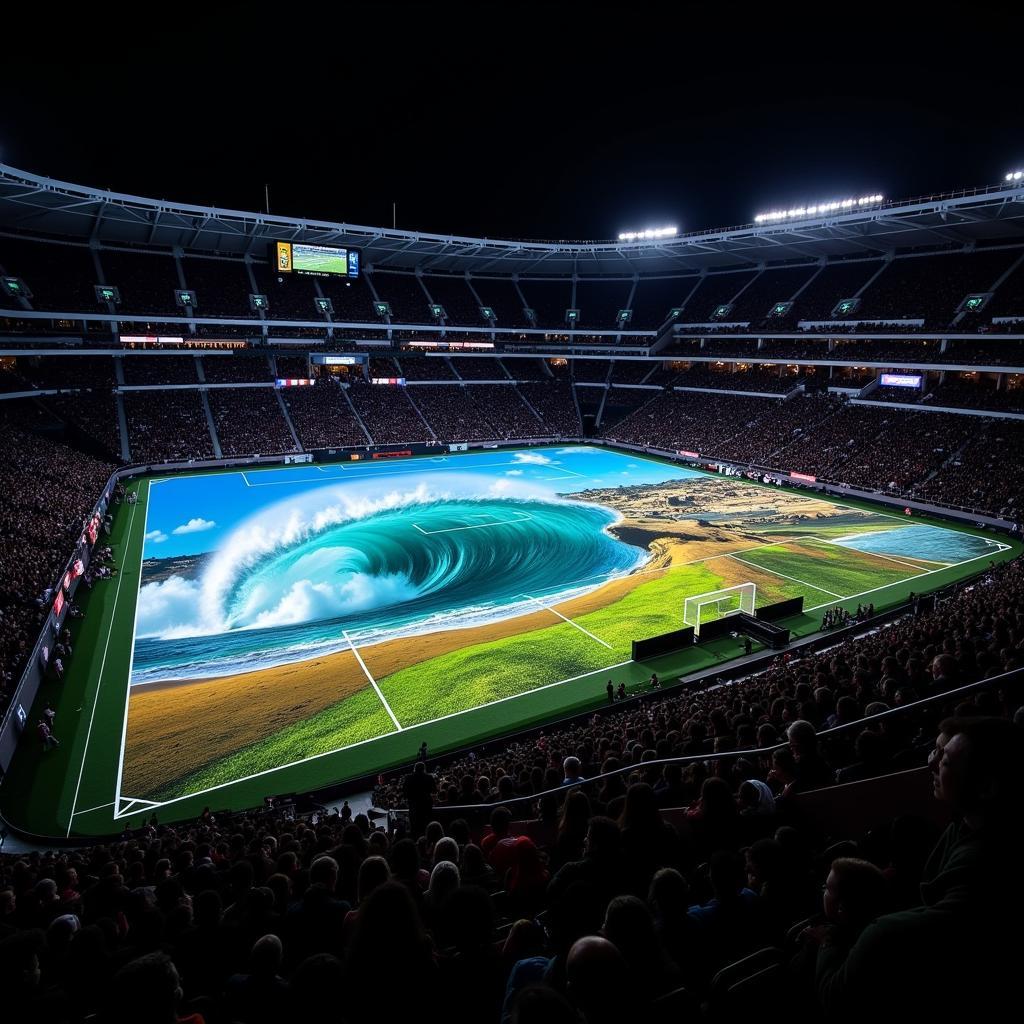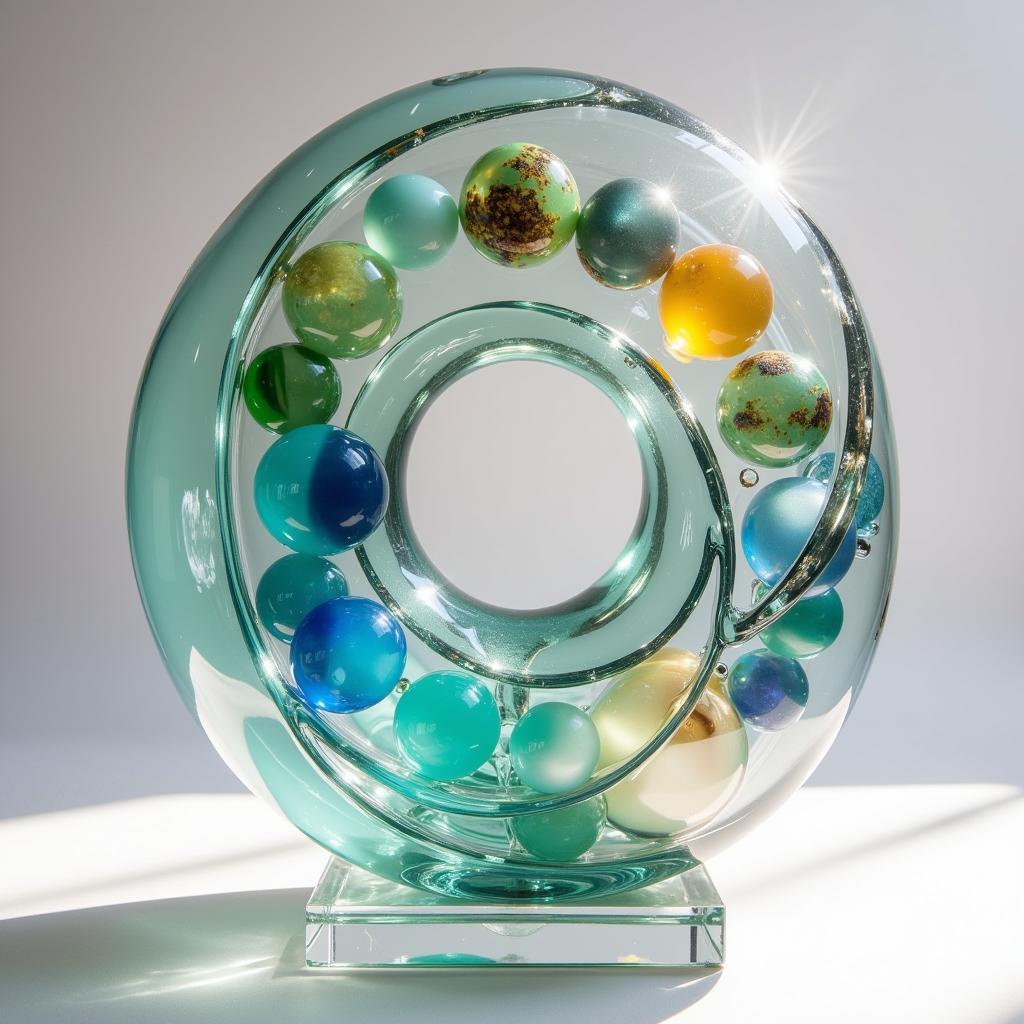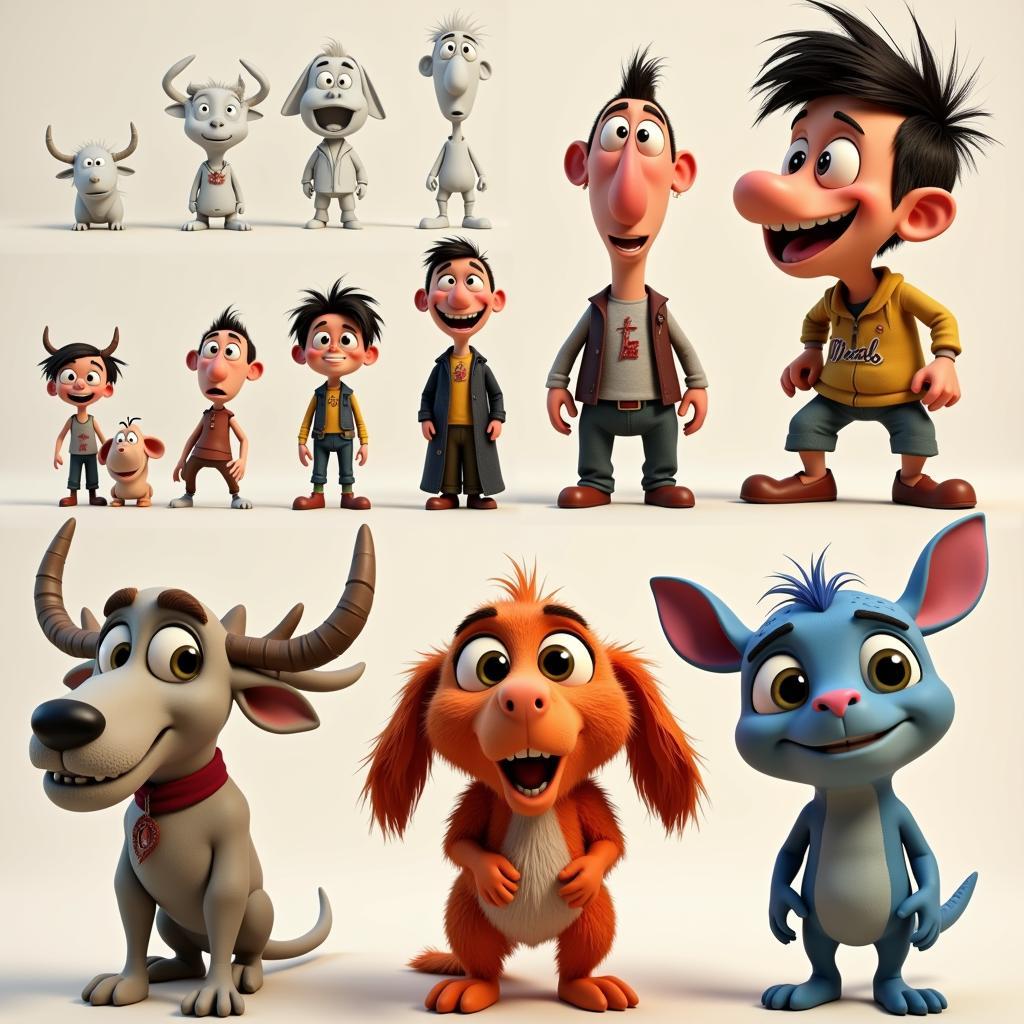Transforming Stadiums with 3D Art
3d Stadium Art is revolutionizing the way we experience sports and entertainment venues. From mesmerizing projections on the field to interactive installations in the concourse, this innovative art form is blurring the lines between the physical and digital worlds, creating immersive and unforgettable experiences for fans and attendees alike. This new wave of artistic expression is transforming stadiums into dynamic canvases, pushing the boundaries of creativity and technology.
The Rise of 3D Stadium Art
What was once a static backdrop for sporting events is now a vibrant platform for artistic exploration. 3D projection mapping, augmented reality, and interactive installations are just some of the tools being used to create breathtaking displays of 3D stadium art. This evolution is driven by advances in technology, but also by a growing demand for more engaging and immersive experiences. Fans are no longer content with simply watching a game; they crave interactive, shareable moments that transcend the traditional sporting event.
Projection Mapping: Painting with Light
One of the most spectacular forms of 3D stadium art is projection mapping. This technique involves projecting meticulously designed visuals onto the complex surfaces of a stadium, creating the illusion of three-dimensional depth and movement. Imagine the field transforming into a roaring ocean, a futuristic cityscape, or even a historical battlefield, all brought to life with stunning visuals and synchronized audio. This technique offers limitless possibilities for storytelling and artistic expression, turning the stadium itself into a dynamic piece of art.
 3D projection mapping transforms a stadium field into a dynamic canvas.
3D projection mapping transforms a stadium field into a dynamic canvas.
The impact of this technology extends beyond pre-game entertainment. Halftime shows can be elevated to a whole new level, with performers interacting with the projected visuals in real time, creating a truly mesmerizing spectacle. Imagine dancers seemingly floating amidst a galaxy of stars, or musicians playing instruments that appear to extend into the virtual world.
Augmented Reality: Enhancing the Fan Experience
Augmented reality (AR) is another powerful tool in the 3D stadium art arsenal. By overlaying digital information and visuals onto the real world, AR can enhance the fan experience in countless ways. Fans can use their smartphones or tablets to view player stats, replays, and even interactive games projected onto the field or concourse. Imagine pointing your phone at a player and seeing their stats appear in real-time, or viewing a replay of a crucial moment from a different angle.
AR also opens up opportunities for interactive art installations. Fans can engage with virtual sculptures, take selfies with augmented reality mascots, and even participate in virtual scavenger hunts throughout the stadium. This interactive element adds a new dimension to the fan experience, encouraging engagement and creating memorable moments.
The Future of 3D Stadium Art: Limitless Possibilities
The future of 3D stadium art is bright, with continued advancements in technology pushing the boundaries of what’s possible. Imagine holographic projections of athletes performing incredible feats, or interactive light shows that respond to the energy of the crowd. As technology continues to evolve, the possibilities for 3D stadium art are truly limitless.
Interactive Installations: Engaging the Senses
Interactive installations are becoming increasingly popular in stadiums, offering fans a chance to engage with art in a more tangible way. From touch-sensitive walls that react to movement to sound installations that create immersive soundscapes, these installations transform the stadium into a playground for the senses.
These installations can be integrated with other forms of 3D stadium art, creating a truly holistic and immersive experience. Imagine a projection mapping display that interacts with a sound installation, creating a symphony of light and sound that envelops the entire stadium.
“The key is to create experiences that are not only visually stunning but also meaningful and engaging,” says renowned digital artist Anya Petrova. “We want to create moments that resonate with fans long after they leave the stadium.”
Another expert, Dr. David Chen, a leading researcher in interactive media, adds, “3D stadium art is not just about entertainment; it’s about creating a sense of community and shared experience. It’s about bringing people together through the power of art and technology.”
In conclusion, 3D stadium art is transforming the way we experience sports and entertainment. From projection mapping to augmented reality and interactive installations, this innovative art form is creating immersive and unforgettable experiences for fans. As technology continues to evolve, the future of 3D stadium art holds limitless possibilities. Embrace the future of fan engagement and explore the dynamic world of 3D stadium art.
FAQ
- What is 3D stadium art?
- How is projection mapping used in stadiums?
- What are the benefits of augmented reality in stadiums?
- What are some examples of interactive stadium installations?
- What is the future of 3D stadium art?
- How does 3D stadium art enhance the fan experience?
- Where can I find more information about 3D stadium art installations?
For further insights, explore our articles on “The Impact of Technology on Sports Entertainment” and “The Evolution of Stadium Design.”
Need support? Contact us 24/7: Phone: 02462573573, Email: danteum@gmail.com, or visit us at Savico Megamall, 7-9 Đ. Nguyễn Văn Linh, Gia Thụy, Long Biên, Hà Nội 10000, Việt Nam.




